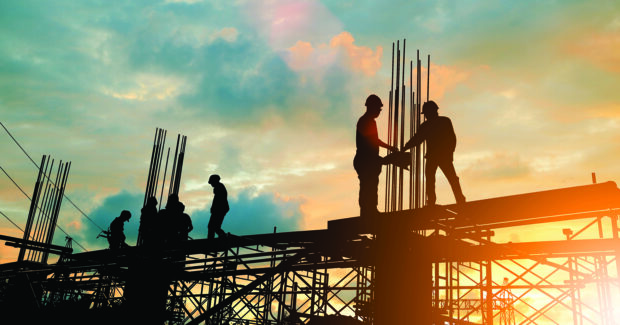Opportunity Knocks: Modernizing U.S. Infrastructure
We have few more pressing needs than updating roads, bridges, pipelines, and energy grids – a potential goldmine for suppliers of heavy equipment, off-road machinery, assemblies, parts and services used in construction projects. The trick is breaking into the market.
Posted: January 20, 2020
Infrastructure is second on the World Economic Forum’s 12 pillars of competitiveness. According to the consulting firm PricewaterhouseCoopers, the U.S. spends massively on roads and bridges, oil and gas pipelines, telecommunications networks and electricity grids, and railways. You’d think that would be good news for manufacturers that supply the utilities and communities that build and maintain these assets.
However, since 1980 our spending as a percentage of gross domestic product (GDP) has hovered around 2.5% compared to its 3% peak in 1959. If not regularly repaired and rehabilitated, infrastructure gradually but inevitably becomes less effective (think potholes after a hard Midwest winter) and, in some cases, deadly (think lead in the drinking water in Flint, Mich.). Despite valiant efforts by state transportation departments and local water and sewer authorities, chronic underfunding over the last six decades has led to an estimated $1.4 trillion gap.
Overall, the American Society of Civil Engineers gives U.S. infrastructure a D+ grade.
So what’s this mean for you?
You, your suppliers, and your customers use roads, bridges, rails, waterways, ports, and airports every day to turn raw material into finished and delivered product. Supply chain advancements like just-in-time manufacturing and 4D constructioneering must be choreographed like a ballet, and it’s tough to maximize productivity if any member of the troupe is stuck in traffic.
As the National Association of Manufacturers and the Associated General Contractors pointed out last September in a letter urging the Senate to pass new transportation funding before the legislation expires on Sept. 30, 2020, this year, “Right now, America’s transportation infrastructure doesn’t support our vision for an exceptional America.”
That said, there’s still tremendous opportunity.
RAILWAYS: The Federal Highway Administration expects freight shipments to increase 37% by 2040.
OIL & GAS: Liquified natural gas (LNG) exports to Europe have increased nearly 300% since 2016. Driven by concerns over climate change and Trump administration policies that speed environmental permitting, producers of “clean” energy are spending roughly $70 million on new processing plants to double exports by 2030. Some of that will go toward compressors, heat exchangers, storage tanks, pipes, valves and other metal components.
ELECTRICITY DISTRIBUTION: According to the U.S. Energy Department, the nation’s power transformers, circuit breakers, and transmission lines are at least 25 years old. Utility spending on replacing these assets with sensors, relays, circuits, and meters that enable “smart” distribution rose 54% over the last two decades, from $31 billion to $51 billion annually.
LOCAL PUBLIC WORKS: If you think that’s a lot, don’t overlook the opportunities in your own backyard. Every year, cities, counties, states, special districts, and townships spend much more maintaining their infrastructure than building new roads and treatment plants. Two-thirds of the average city’s budget is dedicated to things like patching potholes, plowing snow, removing graffiti from stop signs, picking up garbage, and specifying metal products like safety railings and underground vaults.
According to the Brookings Institution, local spending on new infrastructure has fallen 16% since 2007 but risen almost 10% — from $243 billion to $267 billion – for operations and maintenance.
If you can tap into that market, you’ll almost never want for business regardless of what happens with the U.S. economy. Read on for two examples of manufacturers who’ve made it happen.
Keep Reading From Our February Cover Story:
Coming in Loud and Clear
This Kentucky communication tower fabricator got its start a century ago by maintaining water infrastructure assets. Now it’s cashing in on the market for telecommunications infrastructure.
Robotic Welding Cell Gives Street-Repair Supplier the Ultimate in Flexibility
Talk about a high-mix, low-volume operation. American Highway Products’ manhole risers are available in more than 700,000 possible permutations. One software program is getting the jobs done to customers’ wide range of specifications.












